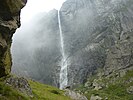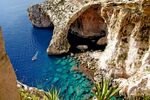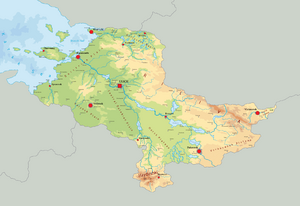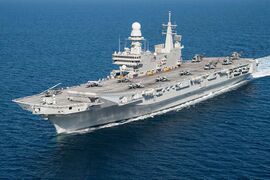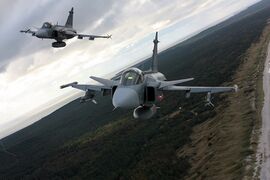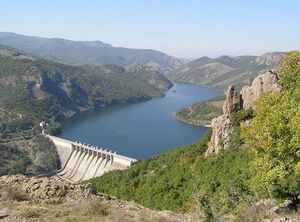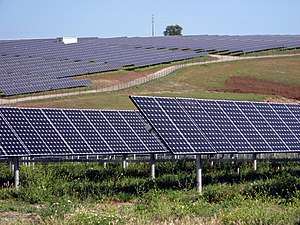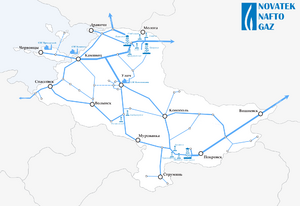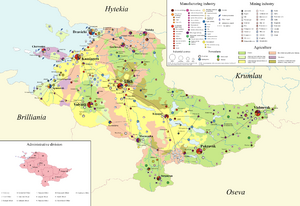Dulebia
Dulebian Republic Dulebian: Дулéбская Респýблика (Dulébskaya Respúblika) | |
|---|---|
| Motto: Вeра и слава (Dulebian) Faith and glory | |
| Anthem: Песня о Pодине
(Pesnya o Rodinye) Song of the Motherland | |
 | |
| Capital and largest city | Ulich |
| Official languages | Dulebian |
| Recognised national languages | See National languages in Dulebia |
| Ethnic groups (2018) | TBD |
| Religion | TBD |
| Demonym(s) | Dulebian |
| Government | Presidential republic |
• President | Alexey Volodin |
• Prime Minister | Vladimir Klishes |
• Chairman of the Veche | Antoaneta Petrovna |
| Legislature | Dulebian Veche |
| Formation | |
| 861 CE | |
| 1218 CE | |
| 1721 CE | |
| 17th of September, 1916 | |
| 12th of March, 1920 | |
• Current Constitution | 31st of January, 2001 |
• Water (%) | 7.1 |
| Population | |
• September 2016 estimate | 34,911,651 (9) |
• February 2017 census | 34,894,117 |
| GDP (PPP) | 2019 estimate |
• Total | $733.3 billion |
• Per capita | $20,992.35 |
| GDP (nominal) | 2019 estimate |
• Total | $534.5 billion |
• Per capita | $15,298.9 |
| Gini (2016) | 36.9 medium |
| HDI (2014) | 0.837 very high |
| Currency | Chervonets (Ћ) |
| Time zone | TBA |
| Date format | dd-mm-yyyy |
| Driving side | right |
| Calling code | +223 |
| ISO 3166 code | MB |
| Internet TLD | .db |
Dulebia
Etymology
History
Prehistory and Antiquity
Late Antiquity and Dark Ages
Principality of Ulich
Dulebian Kingdom
Dulebian Empire
Continental War
January Revolution and the Dulebian Civil War
People's Republic of Dulebia
Dulebian Republic
Geography
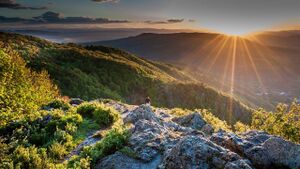
Dulebia occupies a portion of the northeastern Cardia and southwestern Erdara, on the border between the two regions, bordering four countries—Brilliania to the southwest, Oseva to the south, and Krumlau and Hytekia to the north. The land borders have a total length of 3,784 kilometres (2,351.2 mi), and the coastline has a length of 821 kilometres (510.1 mi). Its total area of IDK square kilometres (IDK sq mi) ranks it as the world's Nth-largest country. The most notable topographical features are the Dnistrian Plain, the Riliva Mountains, the Central Dulebian Plain, and the Hajduski Mountains. The river Dnistr runs through the middle of the country, marking the border between Erdara and Cardia. Dnistr is the longest river in Dulebian and is located mostly on its territory.
The Riliva mountains are located in the northern part of the country, on the borders with Krumlau. The mountainous southeast has one distinct alpine range—Hajduski, which are separated by the river Dnistr from the higher and less extensive Riliva Mountains to the North. Skoparnik, at 2,216 metres (7,270 ft), is the highest point in Dulebia, and the Karsk sea coast is the country's lowest point. Plains occupy about two-thirds of the territory, while plateaux and hills occupy 21%. Most rivers are short and with low water levels.
Climate
Considering its small area, Dulebia has variable and complex climate. The country occupies the southernmost part of the continental climatic zone, with areas in the west falling within the Karsk climatic zone, while in some southwestern and southeastern zones forests evolve into steppes. The continental zone is predominant because continental air masses flow easily into the unobstructed Dnistrian and Central Dulebian Plains. The continental influence, stronger during the winter, produces abundant snowfall; the White influence increases during the second half of summer and produces warm and dry weather. Dulebia is subdivided into five climatic zones: continental zone (Dnistrian and Central Dulebian Plains and the Mursk Plateau); transitional zone (Pokrovsk Plateau, most of the Bratsk Plateau, the lower Sub-Riliva valleys); continental-Mediterranean zone (Spassovsk valley); Karsk Sea zone along the coastline with an average length of 20–40 km inland; and alpine zone in the mountains above 1000 m altitude (central Hajdushki Mountains, Riliva and Verhoyansk Mountain Plateau.).
Despite the large distance, the most important climate-forming factor is the White sea through the atmospheric circulation of a cyclone and an anticyclone in its northeastern and eastern waters, which bring cool and rainy weather in summer and relatively mild weather with abundant snowfall in winter. The influence of the Karsk Sea is strongest in the southwestern parts of Dulebia, mainly through the Karsk cyclones. The Riliva and Verhoyansk mountains isolate the country from the hot areas to the east, while the Haydushki block the way for rainclouds to Oseva to the south.
Another important factor is the relief. The Dulebian mountains and valleys act as barriers or channels for air masses coming from the north and east, causing sharp contrasts in weather over relatively short distances. The Riliva Mountains form a barrier which effectively stops the cool air masses coming from the north and the warm masses from the south, while the Verhoyansk mountains also block the movement of hoter air masses from east to west and Karsk masses from west to east. The barrier effect of the Riliva Mountains is felt throughout the country: on the average, northern Dulebia is about one degree cooler and receives about 192 mm more rain than southern Dulebia.
The mean annual temperature in Dulebia is 11.1 °C and varies from −2.2 °C at the nation's highest peak Skoparnik to 13.9 °C at the cities of Spassovsk and Chervontsy in the southwestern Dnistrian valleys. The average temperature in the Dnistrian Plain is 11.4 °C, in the Mursk Plateau – 9.9 °C, in the lower mountains – 8.1 °C and in the higher mountains – 2.4 °C. The highest absolute temperature was measured at the town of Listvyanki in 1943 – 46.4 °C; the lowest absolute temperature was measured at the town of Vrana in 1954 – –35.3 °C. The highest temperature in the lowlands and the hilly regions is in June, while in the higher mountains the warmest month is August. The lowest temperature is measured in January and February, respectively. Many valleys experience regular temperature inversions and fogs in winter. The country's lowest absolute temperature was measured during inversion in the western Dnistrian valley.
The average precipitation in Dulebia is about 720 mm. It is uneven in terms of seasons and territory. In northern Dulebia, the highest precipitation is in winter, while in southern Dulebia it is in May-June. The average amount of precipitation also varies in term of altitude – from 350–850 mm in the plains to 850–1400 mm. The lowest mean precipitation is in the southwestern Dnistrian valley and the Mursk Plateau (350 mm) and in the area around the town Murovanka (500 mm); the highest rainfall falls in the mountains – the Petrohan Pass in the eastern Hajduški Mountains and Andreevo Pass in the Riliva Mountains. The highest annual rainfall was measured in 1975 in the upper valley of the river Peshterska in the eastern Riliva Mountains (2431 mm); the highest daily rainfall was recorded in Chervontsy in the Karsk sea (342 mm) in 1915. The total annual amount of the rainfall is 318 billion km3; of them, 70% evaporates, 20% flow into the rivers and 10% soak into the soil. Most of the country is affected by droughts in June and August. The snow cover lasts from 20–30 days in the lowlands to 9 months in the highest mountains
| Climate data for Dulebia (records from all meteo stations) | |||||||||||||
|---|---|---|---|---|---|---|---|---|---|---|---|---|---|
| Month | Jan | Feb | Mar | Apr | May | Jun | Jul | Aug | Sep | Oct | Nov | Dec | Year |
| Record high °C (°F) | 29.6 (85.3) |
27.8 (82.0) |
37.7 (99.9) |
38.1 (100.6) |
39.9 (103.8) |
43.1 (109.6) |
44.2 (111.6) |
46.4 (115.5) |
39.7 (103.5) |
39.2 (102.6) |
37.7 (99.9) |
25.8 (78.4) |
46.4 (115.5) |
| Record low °C (°F) | −35.3 (−31.5) |
−26.9 (−16.4) |
−21.7 (−7.1) |
−12.8 (9.0) |
−7.6 (18.3) |
−5 (23) |
−2.7 (27.1) |
−0.6 (30.9) |
−7.1 (19.2) |
−12.8 (9.0) |
−19.9 (−3.8) |
−22.2 (−8.0) |
−35.3 (−31.5) |
| Source: Gosstat | |||||||||||||
Biodiversity
Politics
Foreign relations
Military
The Dulebian military is divided into the Ground Forces, Navy, and Air Force. There are also two independent arms of service: Strategic Missile Defence Force, and the Airborne Troops. As of 2017, the military comprised over 76,000 active-duty personnel, the nth largest in the world. Additionally, there are over 185,000 reservists, with the total number of reserve troops possibly being as high as 1 million. It is mandatory for all male citizens aged 20–32 to be drafted for a year or two of service in Armed Forces.
Dulebia's tank force is one of the smallest in Erdara, consisting only of 320 vehicles. It is worth to mention, however, that the tanks operated by Dulebia are one of the most expensive in Gaia, and also are often named one of the best in the world. The country is also capable of producing different types of armoured vehicles, like APC's, IFV's, and its automotive industry erected a large variety of light combat vehicles, ranging from simple light mobility vehicles and up to heavy wheeled tank destroyers.
The country has a large and fully indigenous arms industry, producing most of its own military equipment with only a few types of weapons imported. It has been one of the world's top suppliers of aircraft since 2001, accounting for around 30% of worldwide combat aircraft and exporting them to about x countries. Domestically produced aircraft have proved to be one of the leading designs in Gaia and were used with significant success during the WAR WITH KRUMLAU, scoring an impressive amount of air kills.
The Dulebian government's official 2014 military budget is about Ћ53.08 billion (approximately US$23.80 billion), the nth largest in the world. The official budget is set to decrease to Ћ46.6 billion (approximately US$20.9 billion) by 2025. As of 2018, Dulebian military budget is lower than any other Erdaran nation.
Army
The Dulebian Ground Forces form the biggest branch of the Armed Forces, consisting of 55% of the forces' conscript force. The army uses an indigenous conscription system, where the conscripts are called for 12 months, after the end of their duty are asked whether they wish to stay in the army for one more term of 12 months or to join the army as regular soldiers with a labour contract.
The army itself differs from the armed forces of Dulebian neighbours greatly: it doesn't rely on its numbers, instead using a wide variety of light combat vehicles and a doctrine based on outmanoeuvring its opponents, as well as hit-and-run tactics. The army has a small pool of tanks, consisting of 320 vehicles, with most of them being modernized versions of the Jaguar 3. The army operates its separate air wings of attack and utility helicopters aside from the Air force.
In terms of military doctrine, the Dulebian army is preparing only for defensive warfare against its potential enemy. Dulebian doctrine calls for fast and swift manoeuvre warfare, often on its own territory, with the usage of close air support and a limited number of troops, as well as various hit-and-run tactics. Dulebian High Command focuses on maintaining a small pool of combat vehicles that at the same time have high survivability. In recent years Dulebian officials decided to cut the military budget and the army size, instead focusing on international aid and vehicle and equipment export.
Dulebian High Command highly relies on its special early response unit: the Guards mechanized divisions. Their size is around 3 divisions, and they are integrated into the army command structure, however, they're meant to be mobilized at every moment, and can respond to any attack in a matter of 24 hours. While the Guards are not classified as ˝elite˝ by the Dulebian Command, they receive higher payments than regular soldiers, have an advanced combat training program, and often receive the most advanced equipment erected by the Dulebian arms industry or obtained from abroad. The Guards are the first frontier of defence of Dulebia and are tasked to hold the line against an advancing enemy, giving time for the main forces to mobilize.
Dulebia possesses a small fleet consisting of 58 combat vessels, including two light aircraft carriers purchased from IDK in 1992. The fleets' main task is to protect the territorial waters of Dulebia and to support international peacekeeping operations. The two aircraft carriers are also tasked to perform ground forces support in case of armed conflict on the territory of Dulebia. Most of the vessels are purchased from abroad, however, in recent years the Dulebian government initiated a program to construct the first modern destroyer in Dulebia. Dulebia also possesses 8 diesel submarines, Class 841, purchased from IDK in the '90s. On par with the main fleet, Dulebia sustains two flotillas protecting its territorial waters in the Karsk sea, as well as several small river flotillas. While the fleet is relatively small for the region, it operates pretty modern or modernized vessels for the most part. Ship construction and maintenance capabilities of Dulebia, however, are fairly limited, and the country needs foreign specialists to keep its navy afloat.
Dulebian also has several brigades of heavy naval infantry and anti-ship air squadrons, used mostly for anti-insurgency and counter-piracy operations across Gaian waters.
Air force
While both its navy and army are relatively small for the region, Dulebia operates one the largest air forces in Erdara and fields the largest number of units in the region, boasting 198 combat aircraft, ranging from light training fighters through 5th generation combat fighters and even two strategic bombers. The air force itself is one of the oldest in Gaia, it was formed in 1902 as a part of the railway troops, and consisted of six air balloons and three aircraft. The air force actively fought during the Continental war, performing the first aerial bombing mission in 1913, and was heavily supplied with foreign equipment during the socialist times. During the '20s and '30s the air industry in Dulebia grew rapidly and became a dominant sector of the country's economy. During the '60s Dulebia even designed and its own intercontinental bomber, but managed to build only 2 aircraft, operated by the air force until today.
The modern Dulebian air force is tasked to protect the airspace of the nation, to engage hostiles in its zone of control, and to perform anti-insurgency and counter-piracy activities in the Karsk sea. The air force is also tasked with various search-and-rescue operations and aerial patrols against immigrants above the Karsk sea.
The highly developed air industry of the country is sufficient enough to produce and maintain all the required equipment for a powerful air force and can even export its products abroad. The air branch itself is the only one in the armed forces of the country that did not suffer from the budget cut-offs, instead the budget of the air force is constantly rising to keep it potent.
Dulebia also fields several battalions of airborne troops, altho they act as a separate branch of the armed forces.
Capital punishment
Economy
Energetics
Dulebia is the 6th largest electricity producer in Gaia and the 4th largest renewable energy producer, the latter because of the well-developed hydroelectricity and thermal electricity production in the country. Large cascades of hydropower plants are built in along river Dnistr. However, the country is poor on liquid fossil fuels and needs to import oil from abroad. Its central area is rich on thermal sites, and while most of them are used for recreation activities, some of the major ones are also used to produce electricity, placing Dulebia on the 4th place in Gaia in the list of thermal energy producers. The Gorlovka Basin and the southern Mursk Plateau are rich on natural gas, which the country actively exports to Erdara and Cardia.
Dulebia was the first country in the Cardia to develop civilian nuclear power and to construct Cardia's first nuclear power plant. Currently, the country is the 3rd largest nuclear energy producer, with all nuclear power in Dulebia being managed by EnergoAtom State Corporation. The sector is rapidly developing, with the aim of increasing the total share of nuclear energy from current 21.9% to 30% by 2035. The Dulebian government plans to allocate Ћ88 billion ($35.87 billion) to a state program dedicated to the next generation of nuclear energy technology. About Ћ96 million ($42.7 billion) was allocated from the state budget to nuclear power and industry development before 2015.
As of April 2019, Dulebia possesses 8 nuclear power plants, 11 hydropower plants, 4 thermal power plants, 15 coal power plants, 7 oil powerplants, 3 photovoltaic power stations and 2 wind farms. In addition, the government plans the reconstruction of 5 artificial lakes to hydropower stations until 2030, for which Ћ67.9 billion ($30.2) were invested from the budget for the next 5 years.
Dulebia also plans the construction of 2 new nuclear powerplants near Spassovsk and Komsomol'sk-na-Ugre together with specialists from Erdara. The planned power outcome of the stations is placed at 852 MW and 570 MW, respectively, and will supply the TBN sea coast with additional power that is often in shortage in the tourist season. Around 15% of the electricity produced at the new plants is planned to be exported. The construction is planned to begin in 2028, and the annual prize will be around $2.9 billion and $2.5 billion respectively, 78% of which will come from the state budget. Dulebia plans to make energetic deals with its Erdaran Union partners in the next 6 years.
Renewable energy use, state programs and initiatives
Dulebia is a member of the Erdaran energetic union since 2004. In October 2005, Dulebian president Alexey Volodin signed the Erdaran 2030 program, accordin to which the share of renewable energy sources of every member country must reach 50% by 2030. Dulebia has been rapidly developing the renewable energy sector in the late 2000s' and 2010s', and reached the target 40% in 2016. Currently the country is the 4th largest renewable energy producer, and widely exports it abroad, while non-renewable energy is mostly used domestically.
The Dulebian government created a number of state programs in the early 2010s' to support the construction of new renewable energy powerplants both by domestic and foreign companies. The 2016 Treaty of Chervontsy allowed foreign companies to construct, maintain and operate green powerplants within the country tax-free for the first 3 years of operation, with the Dulebian government subsising the construction. Foreign-constructed green powerplants can be operated completely by foreign companies and are not required to hire Dulebian specialists (although companies that hire Dulebians are freed from taxes for the first 5 years of operation rather than 3).
Since Dulebia is a major electricity exporter, the government has set a goal to reach 75% of renewable energy sources by 2040, while additionally increase the power output of the country to 311 TWh according to the 2040 Program.
Energy consuption
With a gross total energy production of 215 TWh, Dulebia's total consumption in 2018 was 161.25 TWh, or 75% of the energy production. Of those 41% is consumed by the country's industry, 28% by households, 21% by traffic, and the other 10% by minor consumers.
Natural resources and agriculture
Dulebia holds one of the greatest reserves of mineral resources in the region. While some are easy to access, Dulebia's gas reserves are situated in swamp areas making them rather expensive to mine. The country is most abundant in mineral fuels. The most developed fields lie in the northern part of the country, in the Gorlovets Basin, and in eastern Riliva mountains, especially around the city of Vishnevsk. Smaller deposits are found throughout the country, most notably in the western Riliva, the Haydushki mountains, the Verkhoyansk Plateau and around the city of Volynsk. Significant oil reserves are found in the Dravichi Gulf. Scientists claim that the Karsk sea holds a significant amount of oil and potentially gas, however those deposits are only yet to be investigated. Natural gas, a resource of which Dulebia holds around twelve percent of the world's reserves, can be found in the swamps of the Gorlovets basin and southern Mursk Plateau. Major coal deposits are located in eastern Riliva around the city of Vishnevsk, with some smaller deposits found around the city of Strumyan in southern Dulebia. Southern Dulebia also holds the country's biggest iron-ore reserves, and the only tin ore reserve in the area. Western Dulebia, while being relatively flat, still has some reserves of graphite, sulfur, asbestos, magnesite, and granite. Minor polimetallic ore reserves can be found in the Riliva mountains and in central and western Dulebia.
The Karsk sea coast is rich on raw materials such as potassium salts and halite, chalk, and holds minor reserves of phosphorites mostly situated on the Ohotnichiy islands.
Dulebia has the biggest percentage of farmable lands in Erdara, with 42% of the land used for crop farming and cultivation, 18% are used for cattle breeding and 37% are covered by woods, with the rest of the land used for other purposes. The country is one of the biggest wheat exporters in the region, benefiting from the vast amounts of chernozem in the central part of the country, mainly on the Central Dulebian and Volynsk Plains as well as on the Mursk Plateau. The state's agriculture is government-supported with credit policies, and forms 5% of the total GDP. Dulebia's main focus is crop production, as well as industrial crops (mostly cheap maltz and tobacco) and viticulture. The country's cattle breeding potential is very underutilized, forcing it to import meat products like pork and beef, mostly from its Erdaran trade partners. Forests cover a significant portion of the country, placing it realitevy high compared to its neighbours, and Dulebia is a major forestry products exporter in the region, focusing mostly on paper, chemicals and furniture production.
Due to its ownership of the Ohotsk and St. Gleb islands, Dulebia holds the biggest economical zone in the Karsk sea, controlling a solid portion of it. Thus Dulebia is a major sea product supplier for the region, especially for its southern Cardian neighbours and Krumlau. Both fish exports and imports are constantly rising in the past decade, reaching a total share of 965 million in 2019.
Erdaran countries are the biggest trade partners of Dulebia, where it exports 58% of its natural resourses and fuels, 59% of the produced food and 72% of the produced raw materials. The second-biggest trade partner is Brilliania.
Science and technology
First sights of technological development can be traced back to early antiquity. Ancient Rugian tribes were known for being excellent sailors. The first public libraries and schools were built during the Ragucin reign, but their real development was during the Golden Age of the Ulich culture in the 9th century. It is documented that Dulebian warships used liquid fire since the 9th century CE and as late as the 14th, when it was surpassed by cannons, and its receipt vanished from Dulebian records.
Science and technology in Dulebia blossomed since the Dulebian industrial and cultural revolution at the end of the 18th century, after the formation of the Dulebian Empire. The first university was opened in Ulich in 1798. In the 19th and 20th centuries the country produced a large number of notable scientists and inventors.
The Dulebian physics school began with Teodosiy Kerchevskiy, known for his works on the steam engine and the first steam car, as well as heat-distribution and thermodynamics research. Dulebia played a major role in the development of the aircraft, with the aviation pioneer Andrey Efimov building the first flyable aircraft in 1901. Gun synchronizers for aircraft weapons were also pioneered by Efimov. Dulebian scientific researches played an important role in the development of the modern tank, while the Dulebian astrophysicist Nikolay Orlov is renowned for his scientific research on black holes and quasars. Vitaliy Korolyov, a renowned Dulebian engineer, is world-famous for his works on fluid-dynamic drag and fluid-dynamic lift. He also was the chief designer of various pioneering STOL aircraft designs in the '30s.
The Dulebian mathematics school was developed during the 17th century and focused mainly on non-Euclidean geometry and was heavily influenced by the Eastern Renaissance mathematicians. Dulebian scientist Stas Glinka is renowned for his development of the modern stability theory. In the 20th century Dulebian mathematicians, such as Boris Karachevskiy, Ivan Yusupov, and Sergey Zaytsev, made major contributions to various areas of mathematics.
Dulebian physicians like Kerchevskiy and Izmail Vitlyakovskiy are renowned for their works on the engineering thermodynamics and mechanics. Their researches practically gave birth to modern standardized engineering education and mechanics, their works are used in numerous universities worldwide. Kerchevskiy designed the first steam engine in Dulebia, and in 1854 he tested the first wheeled steam car in the country, that eventually would turn into the first Dulebian automobile. The most famous Dulebian biologist is Aleksandr Tsarskiy, known for his researches of bacteria in foods and the discovery of the Lactobacillus Dolebicus in the Dulebian yoghurt in 1904.
Perhaps the biggest number of inventions of Dulebias were made in the aeronautics industry. The pioneer Andrey Efimov has designed and built the first aircraft in Erdara in 1901, he also designed the gun synchronization in 1908, effectively creating the modern dogfight concept. The Dulebian scientist Iosif Ivolzhskiy is known as the inventor of the jet engine; he also constructed the first jet-propelled aircraft in 1937. His works would later lead to the construction of the first jet fighter in history, the Konev-Ivolzhskiy KIR-1, in 1942. Dulebian scientist Igor Chernyshevskiy gave a major boost in the development of helicopters. He is the pioneer of the autogyro aircraft in the 1910s and 1920s and created a series of successful prototypes, some of which were later used in the Dulebian air force. Dulebia was the first country to pioneer the carbon fibre and other composites in aircraft manufacture, leading to the creation of a series of modern aircraft designs such as the C818 and the C878 passenger jets, and the E-24 fighters. Dulebian pioneers, inspired by the flying boat designs of the early 20th century, invented the ekranoplan semi-aircraft concept that was actively used by the Dulebian navy in the late 70s and early 80s to guard its territorial waters in the TBN sea.
Famous Dulebian battle tanks include T-26, one of the most heavily produced tank designs after the Continental war, and the famous Jaguar series of main battle tanks, produced until today, which are one of the most mass-produced armoured fighting vehicles throughout Erdara. Dulebia was the pioneer in the oscillating turret and early tank autoloader designs, creating some of the oldest battle tank autoloaders in history on the successful Moskit light tank series.
The crisis of the late 80s and 90s left Dulebia in a situation where it often lacked money to fund the scientific industry. The economic and privatization reforms of the 90s even worsened the situation. Today Dulebia remains a pretty advanced economy, with one of the most potent aeronautics and defence industrial capabilities, but is often pulled down by internal instability and corruption.
Currently, Dulebia is working on it's Joint Unit Command and Navigation (GloVNaS) system that will integrate all the Dulebian forces into a singular command mechanism. The country is developing its own fifth-generation jet fighter and constructing the biggest twin-engine passenger aircraft in the world.
Infrastructure
The location at the junction between Erdara and Cardia gives Dulebia a major position in the transport system of the two regions. Dulebian road system runs from north to south for the most part, while the east-west roads are only secondary and arterial ones.
Road freight and passenger transport constitute the largest part of transport in Dulebian at 47%. First-class roads are separated into tolled highways, regional highways, and arterials. Personal cars are much more popular than public road passenger transport, which has significantly declined. Dulebia has a very high highway and motorway density compared to the Cardia average. The highway system, the construction of which was accelerated after 1968, has slowly but steadily transformed Dulebia into a large conurbation. Other state roads have been rapidly deteriorating because of neglect and the overall increase in traffic. Dulebia has developed a toll system that has sometimes been criticized for its high prices. It covers all of the Dulebian roads.
The existing Dulebian railways are out-of-date and can't compete with the motorway network. Due to this fact and the projected increase in traffic through the port of Kamianets, which is primarily transported by train, a second rail on the Dravichi-Kamianets-Spassovsk route is in the early stages of starting construction. It will connect all the Karsk shore cities of the country. With a lack of financial assets, maintenance and modernisation of the Dulebian railway network have been neglected. Due to the out-of-date infrastructure, the share of railway freight transport has been in decline in Dulebia. The railway passenger transport has been recovering after a large drop in the 1990s. The only developed rail lines are the Kamianets-Ulich-Pokrovsk-Vishnevsk fast train that is in private property. The government plans to increase the number of fast train lines by 2030 and to increase rail finance, yet for now, the rail network of Dulebia is in relatively poor condition.
The major Dulebian ports are the Ports of Kamianets and Dravichi. Kamianets is the largest Karsk sea port in terms of container transport, with almost 690,000 TEUs annually and lines to all major world ports. In addition, the maritime passenger traffic mostly takes place in Dravichi and the island port of Chervontsy. Two smaller ports used for international passenger transport as well as cargo transport are located in Spassovsk and Sinemorets. Passenger transport mainly takes place with Brilliania and Hytekia.
Air transport in Dulebia is one of the heaviest in the region, and has significantly grown since 1980. The country operates 16 international airports, placing itself in the leading positions in Gaia in terms of air transport. The state-owned Skytrain is the largest Dulebian airline. Besides from that, there are also several low-cost, regional and charter airlines, including Mura Aero, Globus, and Meridian Holidays. Skytrain is one of the biggest airlines in Gaia in terms of passenger traffic, and the biggest and most prestigious airline of Erdara. Due to the highly developed industry, all Dulebian airlines operate mostly domestically-built aircraft.
Tourism
Space and aeronautics
Corruption
Demograpics
Largest cities
Largest cities or towns in Dulebia
Gosstat (2016/2017) | |||||||||
|---|---|---|---|---|---|---|---|---|---|
| Rank | Oblast | Pop. | Rank | Oblast | Pop. | ||||
 Ulich  Kamianets |
1 | Ulich | Ulich city | 5,285,000 | 11 | Spassovsk | Primosrk Oblast | 590,000 |  Pokrovsk  Volynsk |
| 2 | Kamianets | Kamianets Oblast | 2,760,000 | 12 | Moloha | Gorlovets Oblast | 568,000 | ||
| 3 | Pokrovsk | Pokrovsk Oblast | 1,103,009 | 13 | Preobrazhensk | Gorlovets Oblast | 501,000 | ||
| 4 | Volynsk | Volynsk Oblast | 1,008,351 | 14 | Ulyanovo | Pokrovsk Oblast | 440,000 | ||
| 5 | Vishnevsk | Vishnevsk Oblast | 992,000 | 15 | Lozenets | Balkarsk Oblast | 412,000 | ||
| 6 | Dravichi | Severokarsk Oblast | 892,000 | 16 | Kercha | Karsk Oblast | 376,000 | ||
| 7 | Konopol | Konopol Oblast | 799,000 | 17 | Novocherepovets | Primorsk Oblast | 323,000 | ||
| 8 | Chervontsy | Karsk Oblast | 778,000 | 18 | Vyshniy Vychok | Gorlovets Oblast | 265,000 | ||
| 9 | Strumyan | Balkarsk Oblast | 690,000 | 19 | Ahapsk | Gorlovets Oblast | 212,000 | ||
| 10 | Gorlovets | Gorlovets Oblast | 626,000 | 20 | Samarsk | Kamianets Oblast | 187,000 | ||


